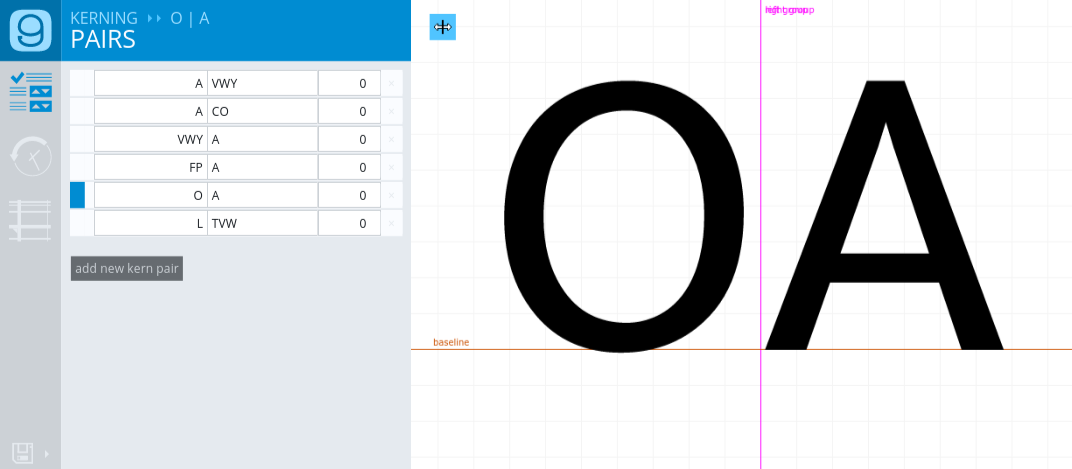
So there are some shiny new things in JavaScript and CSS that would be good dedicate some time to updating – so that’s V2, but when should work on V1 basically stop for that to happen? Not surprisingly, JavaScript has come a long way in the nine years I’ve been working on it ( Glyphr Studio’s birthday was in April 2010). V2? I have already started an exploratory project into re-writing the codebase. Adding big features and small, all with the goal of being able to get typeface design hobbyists from zero to font as efficiently as possible.īut what should the bar be for V1 vs. What actually shipped as V1 was somewhere in the middle, and V1 has come a long way since then ( we just celebrated the 5th birthday of V1 in May!). Of course this could be a huge amount of features, or something pretty basic. The bar to get from Beta to Version 1 for Glyphr Studio was simple: design a font and export an OTF file. Version 1.13 – SVG direct to canvas – also some v1 vs.

Glyphr studio generator how to#
Many times when you’re importing SVG from other programs like Adobe Illustrator, those programs made some interesting choices as to how to add path points. The order of the glyphs happens to be the order in which they were created (as opposed to alphabetical)… so have fun with that 🙂 Mark Overlapping Path Points

The two arrows beneath the Context Glyph area let you easily fly through all your glyphs, as opposed to the two or three clicks it takes to switch glyphs via the Glyph Chooser Panel. One of these features is from v1.13.01, but here is an overview of the new ‘review’ stuff: Previous / Next buttons Neat!Īs I mentioned in my last post, a few features are sneaking into V1, focusing on the fit-and-finish stage of developing a typeface. pile(loss='mean_squared_error', optimizer=tf.(0.001))ĭense(hidden_units1, activation='linear'),ĭense(1, kernel_initializer='normal', activation='linear')])īoth Models are the same, so it would be better to init one of these models and derive its weights by get_weights(), then train that model, and after that init the next model and set its weights by the wights of the previous model with set_weights(weights), it's the closest way to make the same models training performance the same.Howdy! It’s been a couple months… I’ve been fixing up a few bugs, and adding a few new features. Output = tf.(1, kernel_initializer='normal', activation='linear') Model 1 Input = tf.(9,activation='linear') What is the difference between these two models? Because each produce different results consistently.


 0 kommentar(er)
0 kommentar(er)
